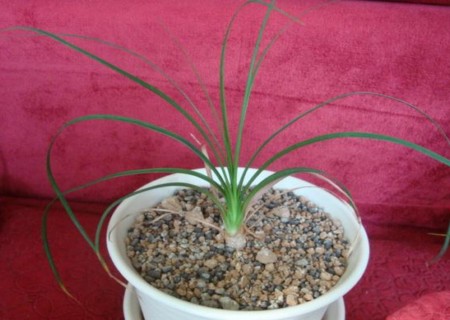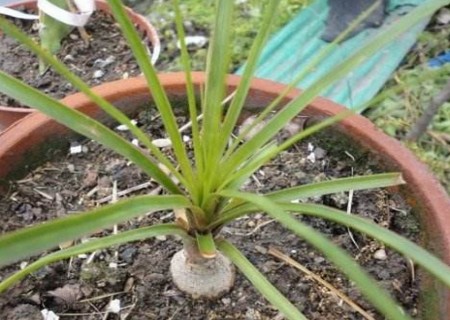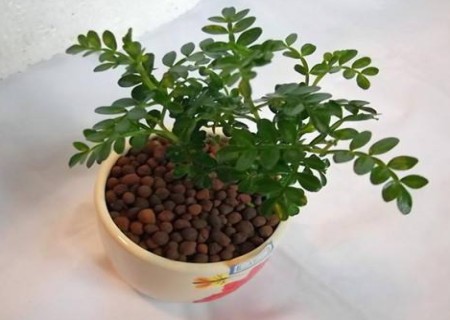Seed propagation method of bottle orchid
Wine bottle orchid, also known as leg tree, false leaf tree family. Cymbidium is a foliage plant, which is a small evergreen tree. Originally from dry and hot areas of Mexico. Wine bottle orchid is a tree-shaped succulent plant, the height of the plant of origin can reach 10 meters, pot planting is generally 0.5-1.0 meters high. Due to the unique shape of the stem, the base is particularly inflated, very similar to a large wine bottle, plus cracked into small cubes of bark and clusters of leaves whirling, become a very strange decorative plant.
Wine bottle orchid is a foliage plant with high ornamental value. After getting started, many flower friends found that wine bottle orchid could not be planted at all, resulting in the delicate flowers gradually losing their due value, so how should wine bottle orchid sow?

1. Distribution of soil
The pot cultivation of wine bottle orchid can use 2 parts of rotten leaf soil, 1 part of garden soil and 1 part of river sand and a small amount of plant ash as substrate.
2. Seed selection
First of all, the seeds should be selected before sowing, and it is best to choose the seeds harvested in the same year. The longer the seeds are preserved, the lower the germination rate is; the seeds with full grains, no defects or deformities, and no diseases and insect pests are selected.
3. Disinfection
The best way to disinfect the substrate used for sowing is to stir-fry it in a pan so that any diseases and insects can be scalded to death. Seed disinfection is to soak the seeds in hot water for about 60 ℃ for a quarter of an hour, and then use warm hot water to accelerate germination for 12 to 24 hours.
4. Sprouting
Soak the seeds in warm hot water (the temperature is about the same as facial wash) for 12 to 24 hours until the seeds absorb water and expand. For common seeds that germinate easily, this work does not have to be done.
5. Sowing seeds
First, stick the seeds with a tool or with a toothpick and place them on the surface of the cultivated substrate and cover the substrate with a thickness of 1 cm. Then put the flowerpot into the water, the water depth is less than half of the flowerpot, soak the water slowly; the larger seeds can be directly put into the matrix, and then cover, 2-3 times the thickness of the seeds. Spray the substrate after sowing, wet the substrate, and then water the basin soil when it is dry, pay attention to the way of watering, do not irrigate too much, the seeds will be washed up
6. Management
In the process of plantlet growth, fertilizer and water management should be strengthened, thin liquid fertilizer and potassium fertilizer should be applied frequently, so as to expand and enrich the stem. In addition, plants that have grown for many years sometimes have small buds in the stem base, and they can also be divided into buds and propagated by cuttings. But care must be taken to disinfect the wound so as not to rot.
As the wine bottle orchid is more drought-resistant, watering should not be too much, otherwise the root is easy to rot. Dry and wet in spring and autumn, moist in summer, and watered when the soil is dry in winter. During the growing season, thin liquid fertilizer should be applied outdoors every half a month, and granular fertilizer should be applied indoors to avoid air pollution. Potted plants should be prepared with fertile sandy soil, garden soil, rotten leaf soil and coarse sand. Change the basin and soil every spring or autumn to maintain the permeability of the basin soil. No matter on the basin or change the basin, it is appropriate to expose the inflated part of the base to the soil for people to watch.
In the growing season from March to October, fertilizer and water management should be strengthened to promote stem expansion. Because the inflated stem can store a certain amount of water and has a strong ability to withstand drought, so when watering, we should take the wetness of the basin soil as the degree, grasp the principle that it would rather be dry than wet, and avoid stagnant water in the basin soil, otherwise the fleshy root and stem are easy to rot.
Especially when the temperature drops after the end of autumn, the amount of water should be reduced to improve the cold resistance of the tree. Liquid fertilizer or compound fertilizer is applied twice a month during the growing period, and pay attention to increase phosphorus and potassium fertilizer when applying fertilizer.
In dry climate and poor ventilation, wine bottle orchid is prone to shell insects. If shell insects are found, attention should be paid to spray control.
Time: 2019-06-09 Click:
- Prev

Cutting method of wine bottle orchid
Wine bottle orchid, as a flower with ornamental stems and leaves, uses it to decorate the living room, study room, hotel and venue, all of which give people a novel and chic feeling. It can be planted in a variety of specifications as interior decoration: small plants are planted in exquisite pots and placed on the desk and table, showing elegance and elegance; medium and large potted plants are planted
- Next

Cutting methods of Fragrance Wood
Cuttage, also known as cuttings, is a common method of breeding plants. The stems, leaves, roots and buds of some plants can be cut (called cuttings in horticulture), or inserted into the soil, sand, or soaked in water. After rooting, they can be planted and become independent new plants.
Related
- Fuxing push coffee new agricultural production and marketing class: lack of small-scale processing plants
- Jujube rice field leisure farm deep ploughing Yilan for five years to create a space for organic food and play
- Nongyu Farm-A trial of organic papaya for brave women with advanced technology
- Four points for attention in the prevention and control of diseases and insect pests of edible fungi
- How to add nutrient solution to Edible Fungi
- Is there any good way to control edible fungus mites?
- Open Inoculation Technology of Edible Fungi
- Is there any clever way to use fertilizer for edible fungus in winter?
- What agents are used to kill the pathogens of edible fungi in the mushroom shed?
- Rapid drying of Edible Fungi

